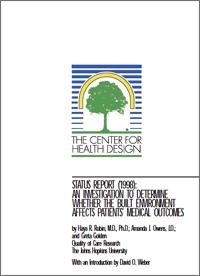Investigation to Determine Whether the Built Environment Affects Patients' Medical Outcomes

In an era of intense concern over the rising costs of medical care, improving therapeutic results through the most efficient allocation of finite resources has become the touchstone of healthcare practice and processes. If, in fact, the very environment in which patients receive treatment has a significant influence on their physical responsiveness and prognosis, it is important to determine which elements can promote more satisfactory outcomes under what circumstances. Healthcare facilities can then be designed to take advantage of such knowledge.
Continued expenditure for structures whose layout, ambience, and appurtenances are informed by guess, fad, or the personal preferences of designers, administrators, healthcare professionals, or even patients themselves - absent solid efforts to square aesthetic leanings and unsupported theories with outcomes data to the extent scientifically possible - is a frivolity we can no longer afford.
This report builds on an analysis of past research to suggest an agenda for further inquiry into the effects of healthcare settings on patient outcomes. It offers a general conceptual model of the ways in which environmental features may influence patients' health, as a guide to the formulation of future research protocols. And it provides four illustrative design applications of how credible scientific evidence might be incorporated into the design of specific aspects of the physical environment to improve therapeutic results.
The research team also outlines a complete research program aimed at validating or discrediting hypotheses about the degree to which the efficacy of healthcare can be enhanced or diminished by key aspects of the designed environment.
Finally, as recommended in the first element of this agenda, the research team conducted focus groups to assist in the identification of patient populations in whom hypotheses about the influences of the healthcare environment might be proven or dis-proven.


Add comment
Log in to post comments